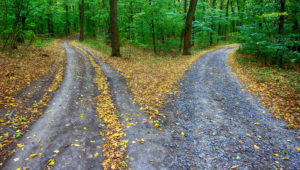 While it may be the era of supercomputers and big data, without smart methods to mine all that data, it’s only so much digital detritus. Now researchers at Berkeley Lab and UC Berkeley have come up with a novel machine learning method that enables scientists to derive insights from systems of previously intractable complexity in record time.
While it may be the era of supercomputers and big data, without smart methods to mine all that data, it’s only so much digital detritus. Now researchers at Berkeley Lab and UC Berkeley have come up with a novel machine learning method that enables scientists to derive insights from systems of previously intractable complexity in record time.
 Ben Brown, staff scientist in the Environmental Genomics and Systems Biology Division, and Bin Yu of UC Berkeley are lead senior authors on a paper published recently in the Proceedings of the National Academy of Sciences (PNAS), where the researchers describe a technique called “iterative Random Forests.” This method searches for predictive and higher order interactions, which could have a transformative effect on any area of science or engineering with complex systems, including biology, precision medicine, materials science, environmental science, and manufacturing.
Ben Brown, staff scientist in the Environmental Genomics and Systems Biology Division, and Bin Yu of UC Berkeley are lead senior authors on a paper published recently in the Proceedings of the National Academy of Sciences (PNAS), where the researchers describe a technique called “iterative Random Forests.” This method searches for predictive and higher order interactions, which could have a transformative effect on any area of science or engineering with complex systems, including biology, precision medicine, materials science, environmental science, and manufacturing.
The co-first authors of the PNAS study are Sumanta Basu (formerly a joint postdoc of Brown and Yu and now an assistant professor at Cornell University) and Karl Kumbier (a Ph.D. student of Yu in the UC Berkeley Statistics Department). The paper is the culmination of three years of work that the authors believe will transform the way science is done. Read more in the Berkeley Lab News Center.



